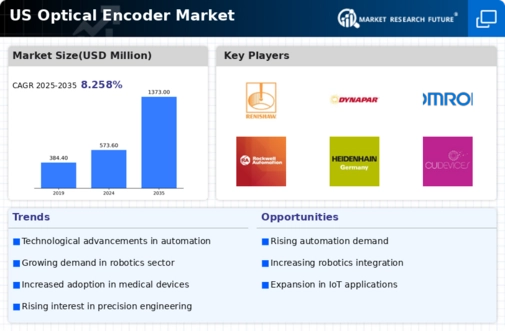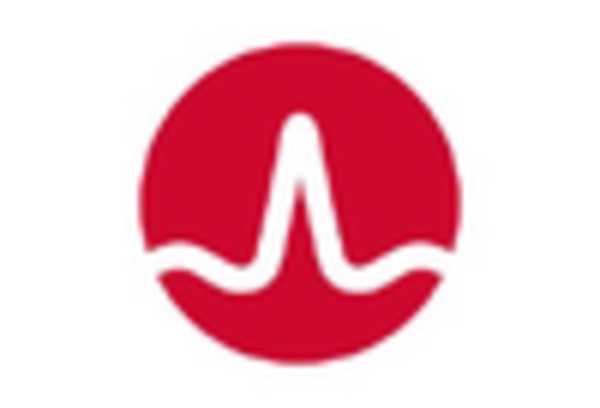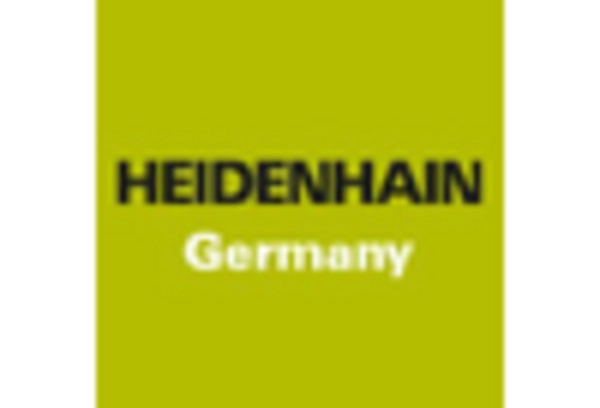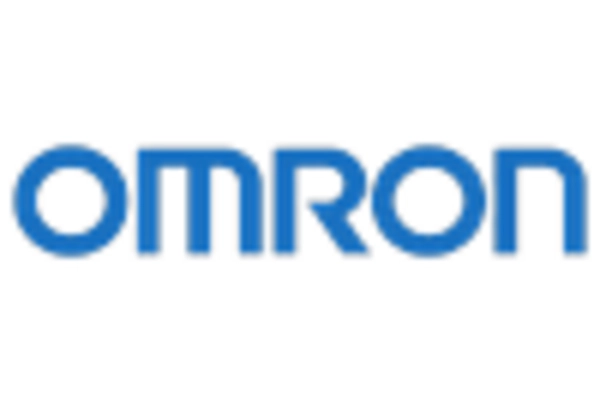Expansion of the Automotive Sector
The optical encoder market is poised for growth due to the expansion of the automotive sector, particularly with the rise of electric and autonomous vehicles. These vehicles require advanced motion control systems for various applications, including steering, braking, and throttle control. Optical encoders are essential for providing the necessary feedback in these systems, ensuring safety and performance. The automotive industry is projected to invest over $300 billion in electric vehicle technology by 2030, which could significantly increase the demand for optical encoders. This trend indicates a promising future for the optical encoder market as it aligns with the evolving needs of the automotive sector.
Growth in Robotics and Automation Industries
The optical encoder market is significantly influenced by the expansion of robotics and automation industries. As companies strive for increased efficiency and productivity, the demand for precise motion control solutions has escalated. Optical encoders play a crucial role in providing accurate feedback for robotic systems, enabling them to perform complex tasks with high precision. The robotics sector alone is expected to reach a valuation of over $100 billion by 2026, which will likely drive the demand for optical encoders. This growth is indicative of a broader trend towards automation across various sectors, including manufacturing, healthcare, and logistics, thereby enhancing the relevance of the optical encoder market.
Rising Demand for High-Performance Machinery
Benefiting from the increasing demand for high-performance machinery across various industries.. As manufacturers seek to enhance the efficiency and reliability of their equipment, the need for advanced feedback systems becomes paramount. Optical encoders provide the necessary precision for high-speed applications, which is essential in sectors such as aerospace and automotive. The market for high-performance machinery is projected to grow at a CAGR of around 6% through 2028, indicating a robust demand for optical encoders. This trend suggests that as industries continue to innovate and upgrade their machinery, the optical encoder market will likely see sustained growth.
Technological Advancements in Sensing Technologies
The optical encoder market is experiencing a surge due to rapid advancements in sensing technologies. Innovations in optical sensing methods enhance the precision and reliability of encoders, making them indispensable in various applications. For instance, the integration of high-resolution sensors allows for improved accuracy in motion control systems. This trend is particularly evident in sectors such as robotics and industrial automation, where precise positioning is critical. The market is projected to grow at a CAGR of approximately 8% from 2025 to 2030, driven by these technological enhancements. As industries increasingly adopt advanced automation solutions, the demand for sophisticated optical encoders is likely to rise, further solidifying their role in the optical encoder market.
Emphasis on Energy Efficiency in Industrial Applications
The optical encoder market is increasingly shaped by the emphasis on energy efficiency in industrial applications. As organizations strive to reduce operational costs and minimize environmental impact, the adoption of energy-efficient technologies becomes critical. Optical encoders contribute to this goal by enabling precise control of motors and drives, which can lead to significant energy savings. The market for energy-efficient industrial solutions is expected to grow substantially, with estimates suggesting a potential increase of 15% in demand for energy-efficient technologies by 2027. This shift towards sustainability is likely to bolster the optical encoder market as industries seek to implement more efficient systems.
















Leave a Comment